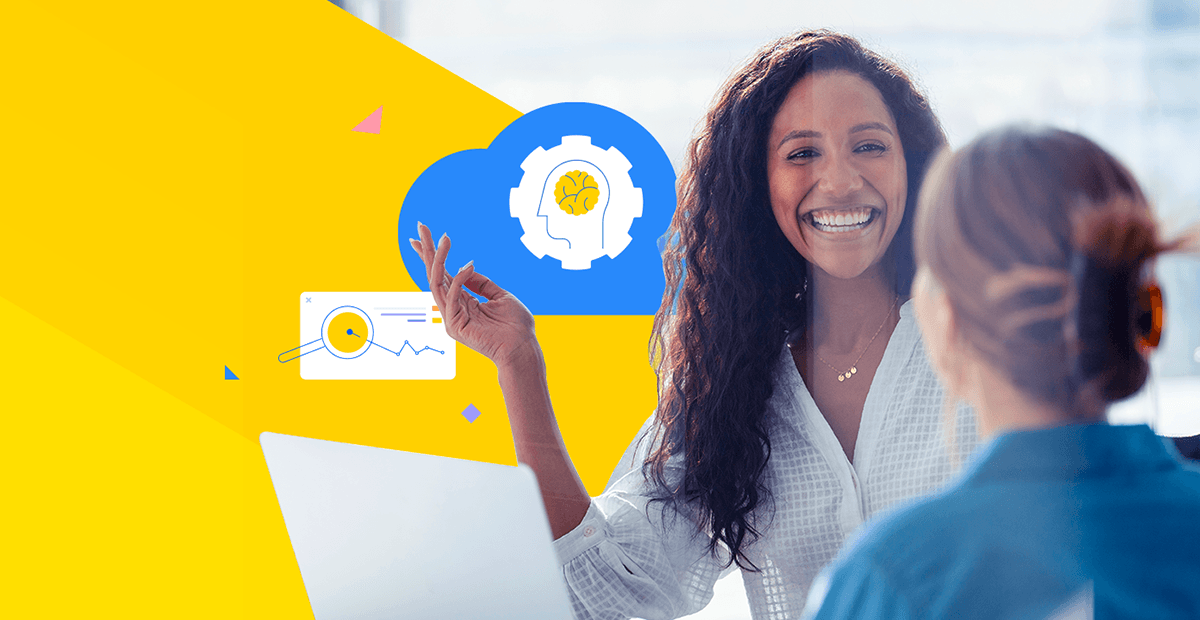Why Organizations Should Use Decision Automation to Solve for Big Data Bias

Behind every decision a business makes, there is a real human impact.
In today's digital environment, artificial intelligence (AI) and machine learning (ML) have become increasingly important. As a result, the debate over whether the data used to support AI and machine learning is biased is crucial. A skewed AI system can tarnish a company's reputation while also creating unjust and detrimental outcomes.
What Is Data Bias?
Unintentional biases within big data sets can cause harmful consequences. Even if the data is scientifically sound and objective, it can still be biased towards different groups.
A good example of this can be found in insurance. When it comes to estimating insurance and medical claims based on healthcare cost histories, AI systems can be biased, which can be unfair to some groups. For example, if a ZIP code is used as a variable in an AI/ML system that automates vehicle insurance requests, an excellent driver who lives in a low-rated neighborhood could have their request rejected.
“Although it may be unintentional by machine learning scientists who are creating models, human bias in data can produce biased models that are discriminatory towards certain populations,” said Shirley Knowles, Chief Inclusion and Diversity Officer at Progress. “That same bias can hinder organizations from achieving internal and external diversity, equity and inclusion goals, which can be challenging to recover from long-term.”
How Can a Policy-Driven Solution Help Your Business?
To preserve the decisions that have a direct impact on your customers' daily lives, it's vital to keep bias out of big data. Because AI/ML is so important in many industries, a policy-driven approach can help limit the risk of bias in big data.
Companies must automate decisions while also describing how those decisions interact with one another. If no one is present to oversee the algorithm's selections, there is a risk in the decisions made. Chief analytics officers, chief risk officers, and data analysts should be most worried about these hazards, and they should dig deeper into their organizations' algorithms to seek bias.
1. Risk Avoidance and Minimization
In most highly regulated industries, such as banking and healthcare, risk minimization is a key focus. Misdiagnosis has a variety of undesirable consequences, including decreased compliance and increased human risk. When bias enters a company's operations, it can be perceived as untrustworthy, resulting in a loss of goodwill, respect, and business.
2. Ethical Decisioning = Customer Appeal
This is especially true for value-conscious customers. Customers who seek out companies that use ethical business practices are becoming more significant in today's world. They might buy a product if the company's values align with their own. This also applies to future employees, who may prefer to work for companies that conduct their daily operations in an ethical manner.
3. Market Opportunities
There is a potential to reach out to these underserved markets. By emphasizing ethical decision-making, you will be able to reach out to a wider range of audiences.
3 Ways a Business Can Approach Ethical Decisioning
1. Develop a framework to consider the cost of “wrong” decisions in your business.
The impact of these poor judgments on your customers can be measured on a scale. Bad recommendations on an ecommerce site, for example, could be on the low end of the scale, where the financial value is low and the level of harm to the client is low.
On the other hand, we have high-end decisions that have a detrimental impact on the customers' well-being. This has a high monetary worth as well as a high level of consumer harm. For instance, being rejected for a home loan, being passed over for a job, receiving an incorrect medical diagnosis, and so on.
This will make it easier to see what can be automated and what needs human intervention.
2. Emphasize transparency and traceability.
It is critical to be able to see your automatic decisions. AI/ML may be able to assist, but it still needs human assessment. It is also crucial to be open with your customers; having answers for the decisions you have made can make all the difference in this case. Explaining why a consumer was denied a loan is more crucial than allowing the computer to make the full decision on its own. Furthermore, as rules and standards in many industries become more stringent, having a tool to help explain findings to comply with regulations would be advantageous.
3. Be proactive.
Create mechanisms for detecting and measuring bias. Knowing what bias is and how it affects your business will help you make more secure decisions in the future. You may now support the business needs necessary to undertake ethical decision automation, whether you provide software or final solutions once you have identified these potential biases.
How Can Progress Corticon Help?
Progress Corticon is a business rules management system (BRMS) that can be used to create rules/policies to detect and eliminate biases. Corticon can automate policy-driven choices. This is because regulations are "human-readable" and may be debated with a wide range of stakeholders. Because rules are not buried in lines of code, they are also accessible and reviewable by users.
Click here to download the full whitepaper to learn more about the importance of ethical decisioning and how it will affect your organization and customers.

Jessica (Malakian) Newton
Jessica (Malakian) Newton is a Senior Product Marketing Specialist at Progress, focused on the Progress OpenEdge product. Jessica started her career at Progress as an intern in 2020 and has since developed into a full-time marketer, dedicated to guiding customers on how to maximize the value of their OpenEdge solutions. Outside of work, Jessica enjoys reading and writing.
Related Tags
Related Articles
Almost by definition, Big Data must focus on the big picture. Unfortunately, as the volume of data involved in Big Data efforts grows, the resolution of that big picture might be getting a little grainier....
